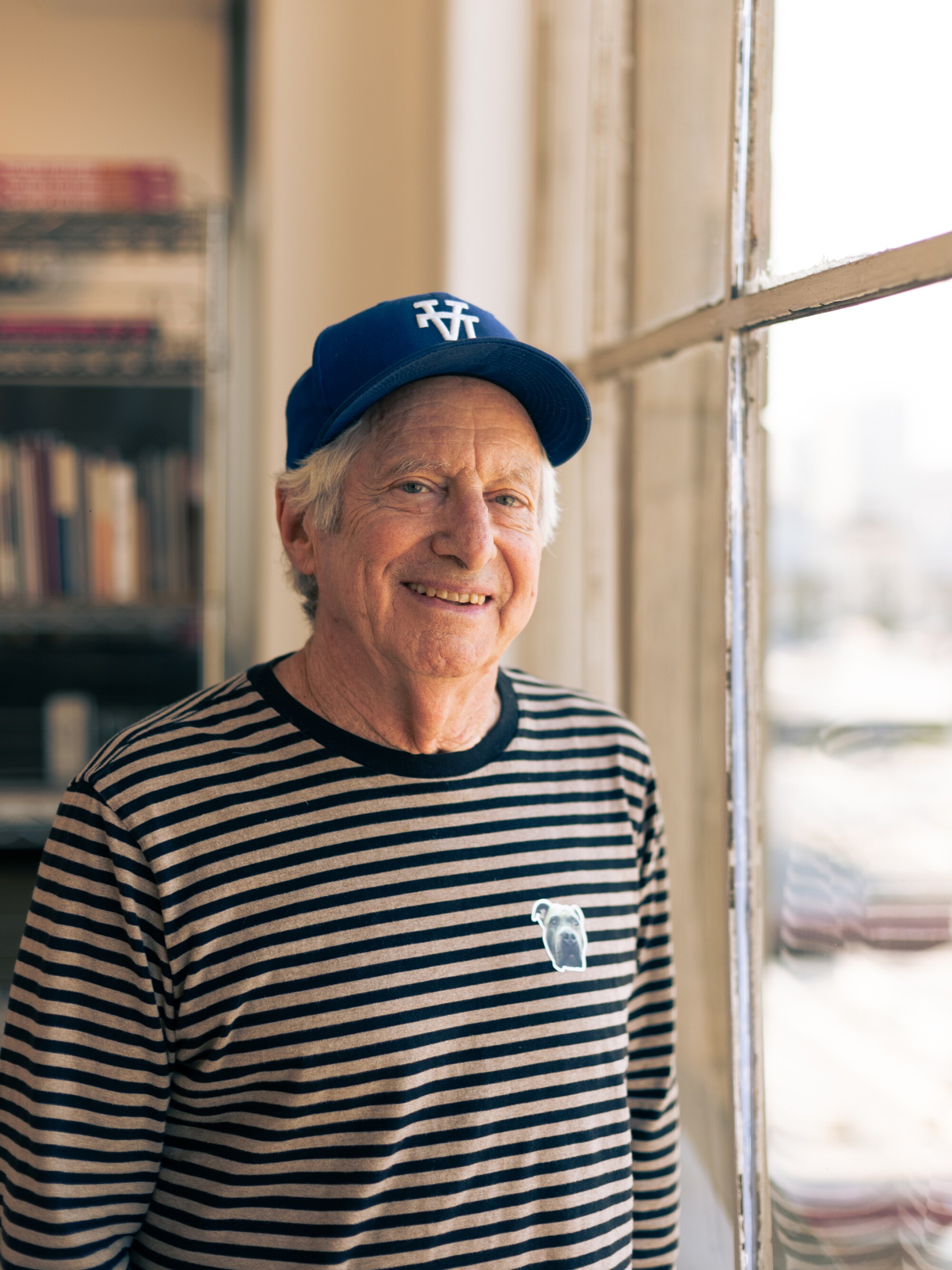
Robbie Conal at Track 16 gallery in downtown Los Angeles.
(Wesley Lapointe / Los Angeles Times)
It’s 10 o’clock on a Friday night and almost three dozen people have gathered around a table at Canter’s Deli on Fairfax to plan a mission. It’s the day the U.S. Supreme Court has overturned Roe vs. Wade, in a decision that cites a 17th century witch trials judge whose big claim to fame was establishing the idea that a woman can’t be raped by her husband.
Standing amid the crowd is Robbie Conal, in striped shirt and baseball cap, holding court. He is, as he puts it, “really pissed off.”
Conal has for decades been papering the streets of Los Angeles with political broadsides that decry corruption, hypocrisy, warmongering, homophobia and sexism, rendering their greatest (frequently male) purveyors in grotesque, downright oleaginous ways: crumpled and jowly, with cold, unfeeling glares. These images he frames with biting slogans whose fonts are usually designed by his wife, graphic artist Deborah Ross.
One of his more memorable pieces, from 1991, depicted former Supreme Court chief justice William Rehnquist with the phrase, “GAG ME WITH A COAT HANGER” — a reference to a gag rule, first devised during the Reagan administration, that prevented doctors from counseling patients about abortion.

Robbie Conal, “Supreme Injustices,” 2022.
(Fred Davis / Robbie Conal)
Now, 30 years after reproductive rights activists fought to have that gag rule rescinded, Conal is back with another poster, “Supreme Injustices,” that takes on the six justices who voted to overturn Roe. “Exactly 30 f— years ago,” he tells the assembled crowd. “And here we are again.”
Gathered at Canter’s are friends, artists and activists who have turned out to put up his poster. This includes a group of women Conal has dubbed “the Guerrilla Matrons,” who have been collaborators since the early ’90s. Some have brought their daughters and granddaughters along. “He puts out the bat signal,” says artist Tony de los Reyes, “and we all gather at Canter’s.”
After a quick instructional session and a run-through of “Robbie’s rules of guerrilla etiquette” (eg., don’t paste on private property), posters and buckets of paste are distributed and the volunteer army is off. Los Angeles will wake up the next morning to the sight of the “Supreme Injustices” on electrical boxes, bus shelters and construction walls around the city.
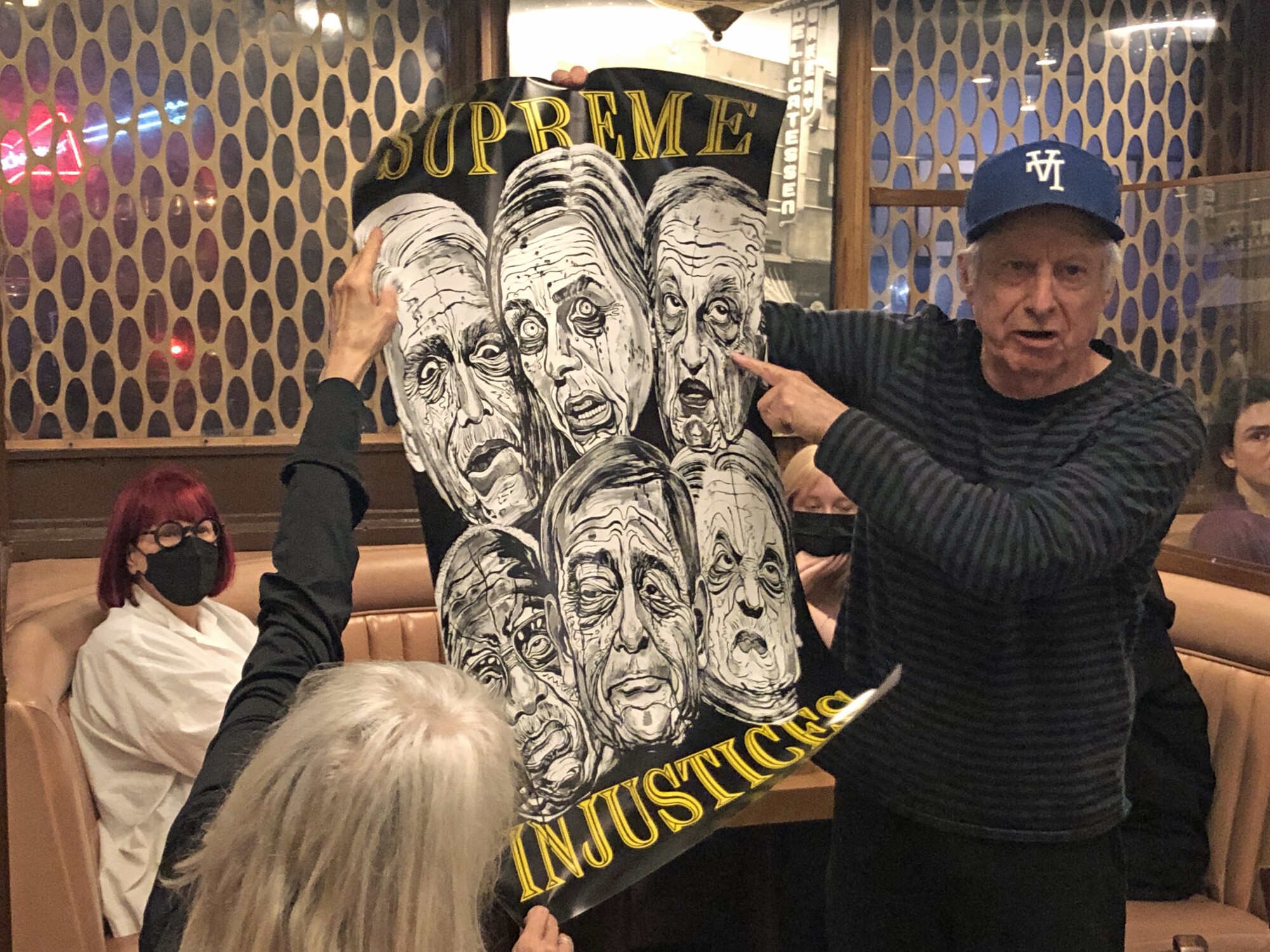
Robbie Conal gathers the troops at Canter’s Deli to put up his poster, “Supreme Injustices.”
(Carolina A. Miranda / Los Angeles Times)
At 77, Conal remains steadfastly committed to creating work that afflicts the powerful. A selection of some of his early posters — including works critical of Reagan and former LAPD chief Darryl Gates — is currently on view at the Riverside Art Museum in the group exhibition “What Would You Say?: Activist Graphics From the Los Angeles County Museum of Art.”
On a recent Saturday afternoon, we met at Track 16, the gallery that represents him. In this conversation, which has been edited and condensed for clarity, Conal discusses his youth in New York City, the fist fight that bonded him to an esteemed mentor and what he’d tell the Supreme Court justices if he could meet them in person.
What needs to happen to spark a Robbie Conal guerrilla postering mission?
I have to get really pissed off — which is easy. There’s so many bad guys and so little time. You know those thermometer things at state fairs where you hit the thing and it goes up? I have one of those inside my body. The more hits I get, and the more hits I get for a certain perpetrator, it gets to a critical point where the bell goes ding.

The morning after Roe v. Wade was overturned, Los Angeles woke up to the sight of the “Supreme Injustices” on electrical boxes, bus shelters and construction walls around the city.
(Carolina A. Miranda / Los Angeles Times)
For “Supreme Injustices,” even before [the Roe decision] was leaked, you could tell with your Spidey sense that this was going to be really bad. That was like six bells going off.
I was brought up in a very politically conscious atmosphere. My dad was blacklisted. We watched the McCarthy hearings as a family through the [spring] of ’54 from my parents’ bed.
Your parents were labor organizers. How did that shape your worldview growing up?
I’m a red diaper baby. My mother’s breast milk was pink. They would drag me to all of these meetings. “Robala, you’re coming!” They’d be, “Sit right here, Robala. Right up front. If you have questions, you ask them.”
Since my parents were saving the world from capitalist greed, I was a latchkey kid. They considered the major museums as daycare centers. I was raised by the Met and the Modern [the Metropolitan Museum of Art and the Museum of Modern Art]. [Picasso’s] “Guernica” was my friend. We got along great.
I used to try to scare myself. You know James Ensor? In ’51, the Modern bought a painting of his — something like “Death Accosted by Masks.” [The title is “Masks Confronting Death,” painted in 1888.]
I loved that painting. But I was scared of that painting.
What was your first political poster?
The first one was in ’83 and it was “Hands Off Central America.” That was for an organization. [Artist] Jerry Kearns and [critic] Lucy Lippard and a few other people that I knew from political things had this organization. It was influenced by [painters] Leon Golub and Nancy Spero [who were married]. They were my art mom and dad. And they were a part of that group.
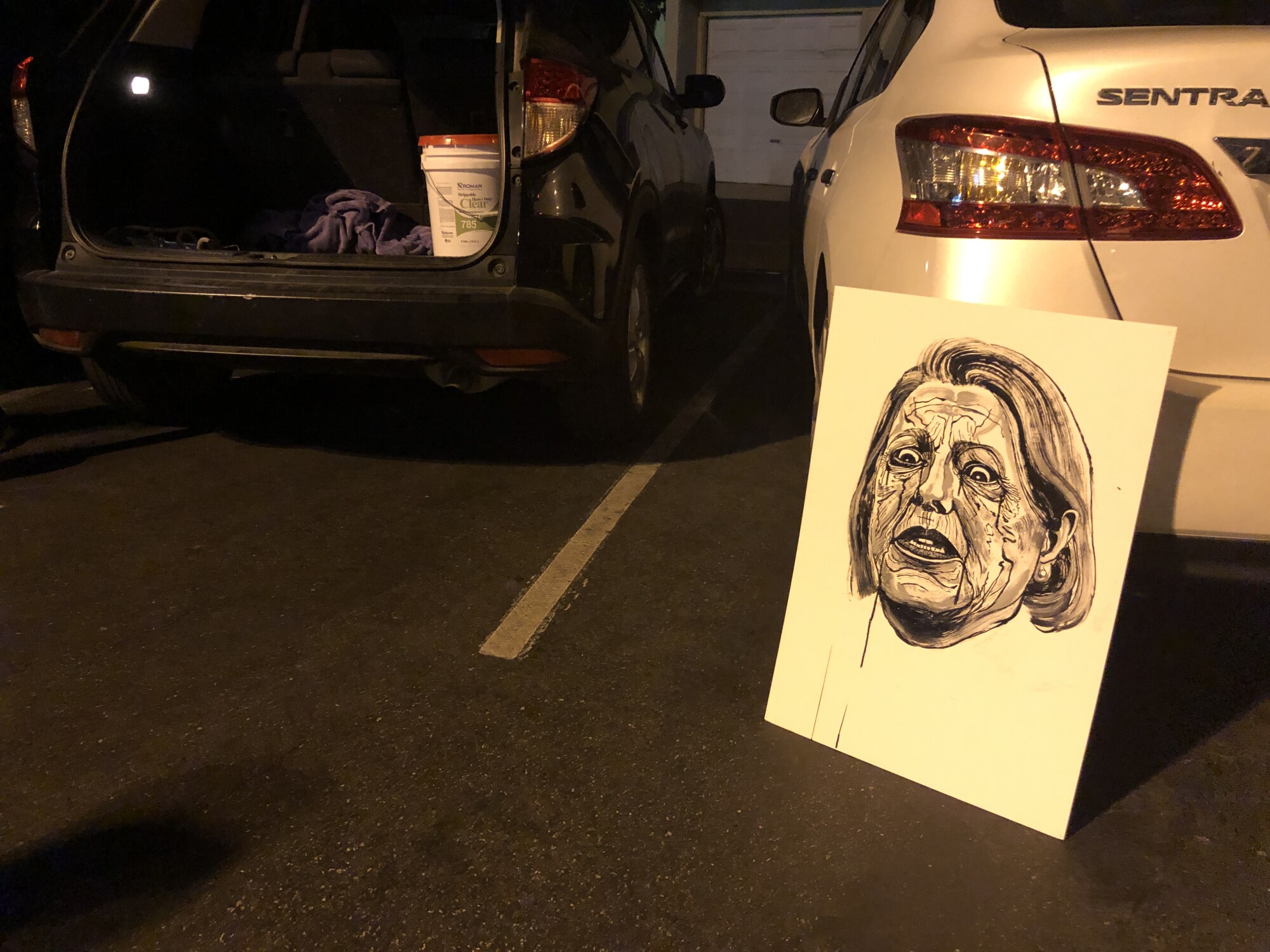
A portrait of Ginni Thomas rests in the parking lot at Canter’s as Robbie Conal hands out pasting supplies to friends.
(Carolina A. Miranda / Los Angeles Times)
How did you become friendly with Golub and Spero?
I got a Rockefeller artist-in-residence fellowship at the University of Georgia at Athens. The first day, the chair of the department, he says, “We have a guest lecture program. Who are you interested in?” And I said, “Leon Golub.” And he said, “Get him to come down.” I said, “I don’t know him, he’s just my favorite artist.” And he said, “Don’t those New York artists have a certain pride about being in the New York phone book? Call him.”
So I call him. I’m like, “You don’t know me, but...” He’s laughing. And I said, “If there’s any chance at all, I’d like to invite you to give a lecture.” He says, “How much money do you have?” I look at the chairman and he holds up three fingers. I say, “Three thousand?” He goes, “No, three hundred.” [Leon] tells me, “I have a show in Atlanta coming up. If you can do everything for me — come get me, keep me fed — if you do that, I can make an evening out of it.” So I borrow a pickup with a gun rack and I go get him.
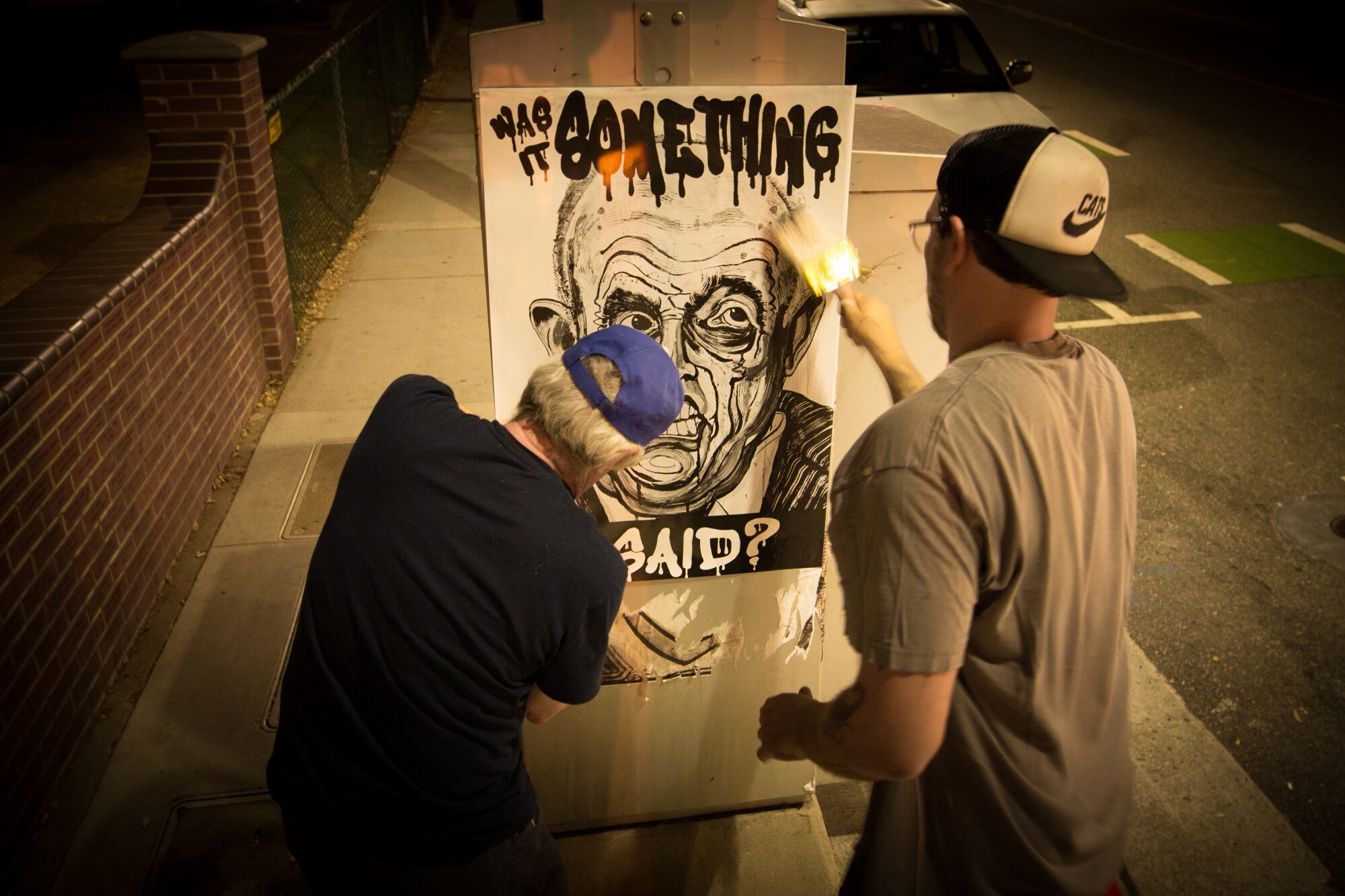
Conal and a friend put up posters of Rudolph Giuliani in 2018.
(Sean Meredith)
The University of Georgia is huge. His talk is in this auditorium. It has like 800 people and it’s packed. And [Leon] is sitting in this wooden chair in the middle of the stage and he’s like, “I did this. I did that.” [Conal pretends to click through slides.] All of a sudden there’s a fight in the balcony — a fist fight. It turns out there’s one art professor who thought Leon’s early art was better, but when he switched to making paintings about Vietnam, he didn’t like it very much. And the other had a different view.
That was a bonding moment for me and Leon.
How many posters do you think you’ve put out on the street over the course of your life?
Thousands. They were usually printed in editions of 3,000, sometimes more. We took them on tour — like garage band rock ‘n’ roll tours. They were pretty funky. I’d be sleeping on some artist’s floor under the El in Chicago.
We were once in Washington, D.C., which is ground zero for most of my subjects. We had a range of people helping us. Political functionaries, low-level bureaucrats, lawyers, artists, graphic designers, but also the Lesbian Avengers — and they were fantastic. One night at like 3 in the morning, I’m driving around one of the roundabouts in D.C. and I see a picnic in the roundabout: gingham tablecloth and Chianti in the basket and cheese and grapes and they’re playing Otis Redding. And there are like eight women having this picnic and I’m like, who the hell is that? And I go peek and they’re like, “Robbie! It’s the Lesbian Avengers!”
They were partying after getting everything up. They turned it into a celebration.
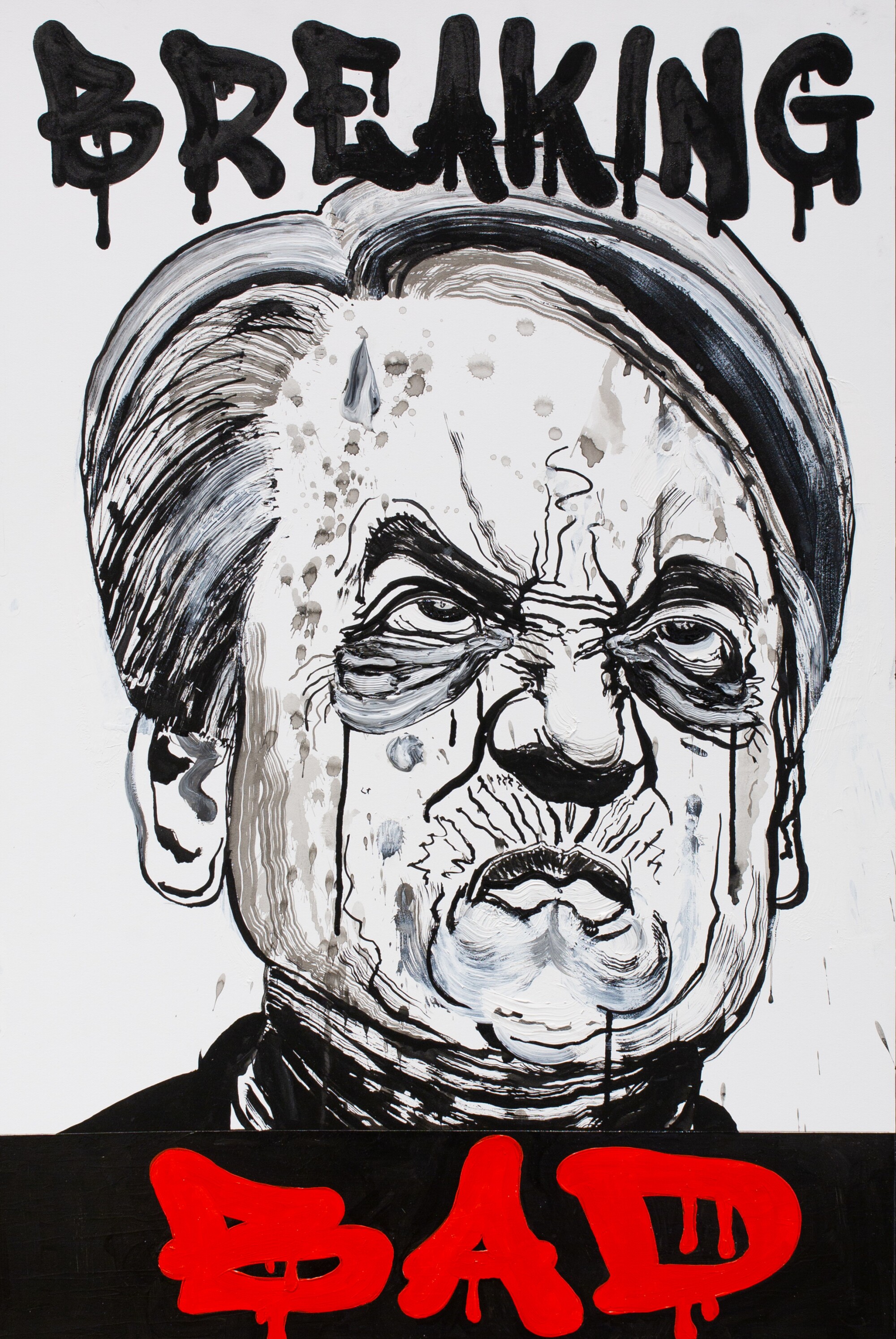
In 2018, Conal produced a poster parodying Brett Kavanaugh’s facial expressions during his confirmation hearing for the U.S. Supreme Court.
(Alan Shafer / Robbie Conal)
It strikes me that U.S. protests could use better graphics. In Mexican and European protests, you’ll see incredible posters and costumes. Here, everyone has crude cardboard signs. Why do you think our protest graphics game is weak?
That’s a big question. The Center for the Study of Political Graphics, they’re fantastic. They have an international collection of international protest art. I was on the board for a long time. [They] would have these exhibits of political protest art from the United States at a library or somewhere. We’d go to the opening and the stuff looked terrible. Well, it wasn’t terrible — just kind of pathetic. These are people who are not artists making things because they care so much. It’s embarrassing to me that there aren’t more American artists who are involved in making public protest art.
It’s not that it doesn’t happen in the United States. You can talk about the great Barbara Carrasco, who for 20 years did banners for farmworkers and it was fantastic stuff. You also had Rupert Garcia in the Bay Area — he does great stuff. It’s art that has a tradition back to the Mexican Revolution and before. You have José Guadalupe Posada [known for his prints of skeletons].
When people say, “Who are your influences,” I tell them it’s Daumier and Posada.
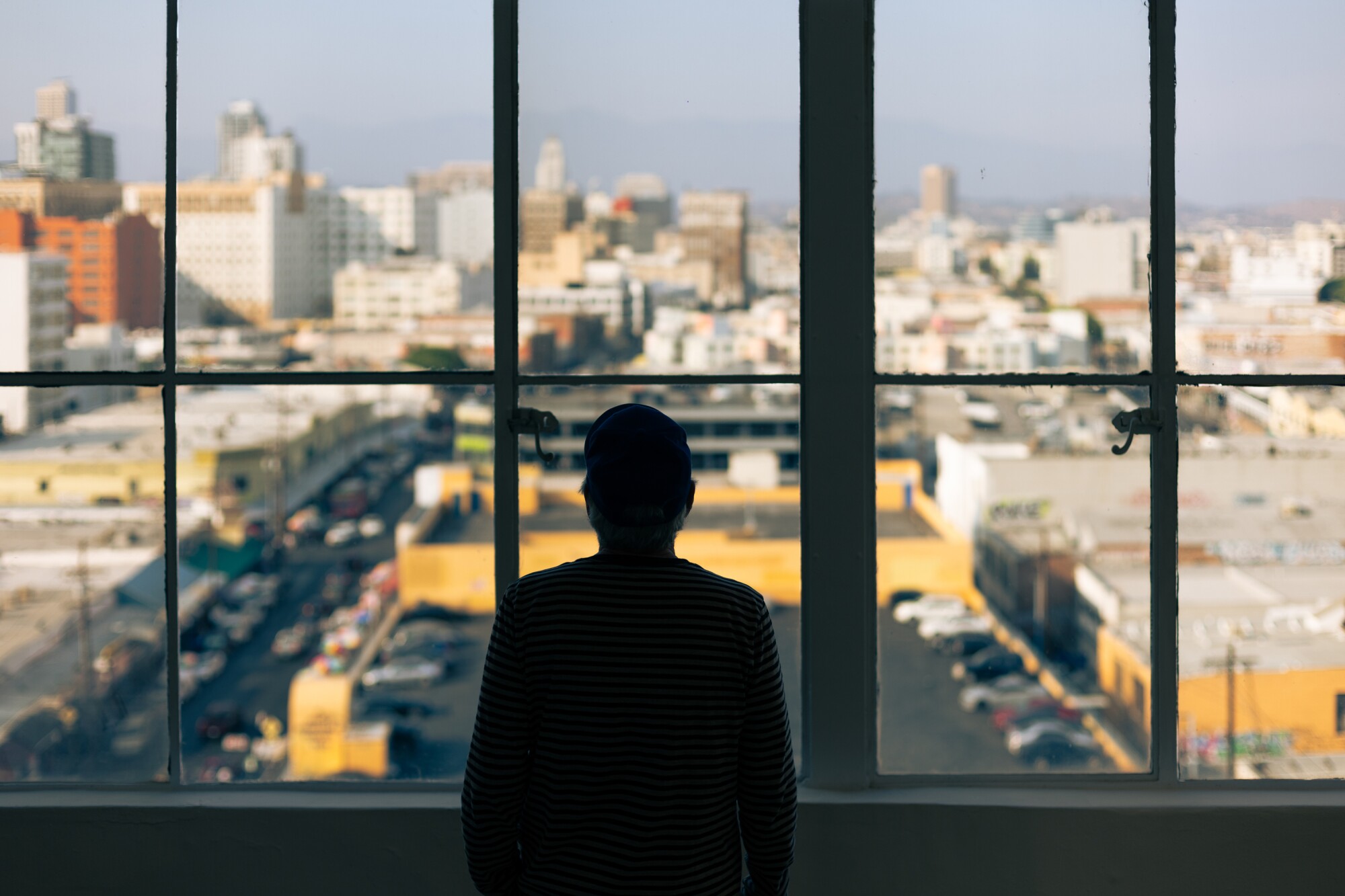
Robbie Conal at the window at Track 16 gallery in the Bendix Building.
(Wesley Lapointe / Los Angeles Times)
Your work often dwells in the grotesque. Why is that interesting to you?
It’s not interesting to me. It’s the way it is. These people are grotesque. The corrugation of their flesh is a metaphor for the corruption of their souls.
How have you adapted your work to the digital age?
It’s affected me a lot — particularly in terms of distribution. To give you an example: We did this one poster and we put up like 400 of them in L.A. Usually my practice would be to take them on tour and go to major cities around the country and have local volunteer guerrillas go out in the middle of the night and put them up. But these days, that’s not so possible for me. People say, “You’re the O.G.” I’m like, yeah, the Old Guy.
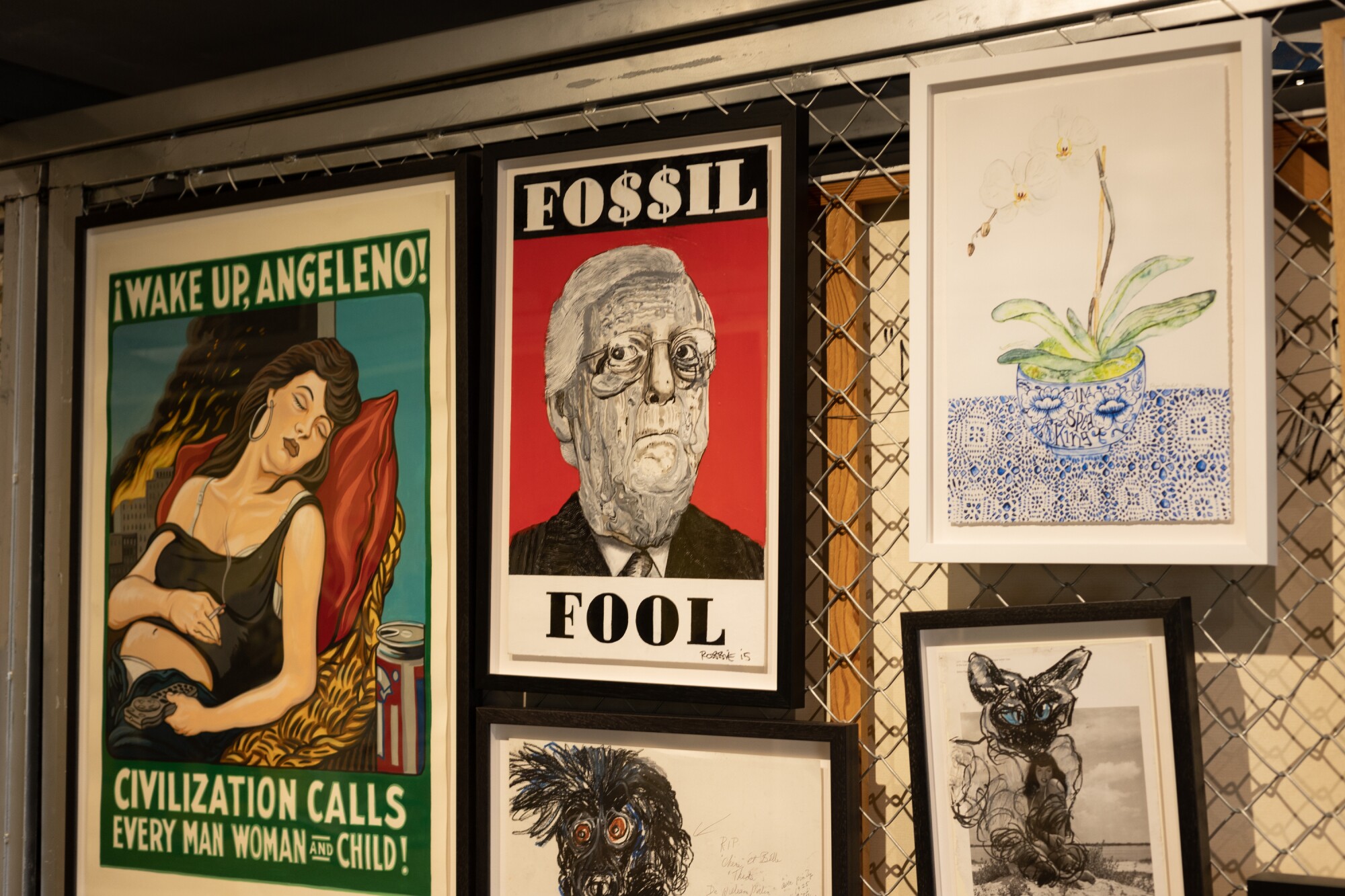
Robbie Conal’s “Fo$il Fool,” 2001 (at center), depicting Sen. Mitch McConnell, hangs among the storage racks at Track 16 gallery.
(Wesley Lapointe / Los Angeles Times)
But with this poster, Debbie said, let’s offer to send poster packs to people around the country who are willing to put them up. And this being the internet, we got messages from Anchorage, Alaska; El Paso, Texas; Nashville, Tennessee; Missouri — Josh Hawley country. I’m not gonna get there.
If you could tell the Supreme Court one thing right now, what would it be?
It’s unprintable.
'What Would You Say?: Activist Graphics From the Los Angeles County Museum of Art'
Where: Riverside Art Museum, 3425 Mission Inn Ave., Riverside
When: Through Aug. 7
Info: riversideartmuseum.org